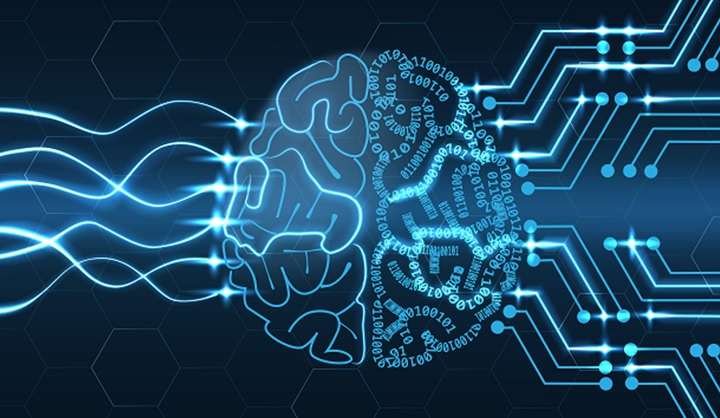Join Forward-thinking Leaders
Elevate your expertise with tech insights, startup breakthroughs, and leadership intelligence curated for your priorities.
Elevate your expertise with tech insights, startup breakthroughs, and leadership intelligence curated for your priorities.

Subscribe to our newsletter!

Table of Content
The recent launch of DeepSeek AI has significantly impacted the tech industry, challenging established AI players like OpenAI and Meta. DeepSeek’s innovative models are reported to perform on par or better than leading U.S. AI technologies, prompting a reevaluation of market. OpenAI believes outputs from its artificial intelligence models may have been used by the Chinese startup DeepSeek to train its new open-source model that impressed many observers and shook U.S. financial markets. This has aroused a lot of interest and discussions around training Large Language Models (LLMs) with the technique of dataset distillation.
Traditionally, training LLMs from scratch is computationally expensive, often requiring massive datasets and significant hardware resources. To address these challenges, dataset distillation has emerged as a promising technique. This article explores the concept of training LLMs with distilled datasets, discussing its pros and cons, as well as the challenges and limitations associated with this approach.
Dataset distillation is the process of creating a smaller, more compact version of a dataset that retains the essential information needed to train a model effectively. The goal is to reduce the size of the dataset while maintaining or even improving the model’s performance. This is achieved through techniques such as knowledge distillation, core-set selection, synthetic data generation, and dataset pruning.
1. Reduced Computational Costs
Training LLMs on large datasets requires significant computational resources, including high-end GPUs or TPUs. Distilled datasets significantly reduce these requirements, making it feasible to train models on smaller hardware setups.
Example: DistilBERT, a distilled version of BERT, was trained using only 40% of the original dataset’s size, resulting in a 60% reduction in training time and computational cost.
2. Faster Training and Iteration
Smaller datasets enable faster training cycles, allowing researchers and practitioners to experiment with different architectures, hyperparameters, and techniques more efficiently.
3. Improved Generalization
Distillation can help remove noisy or redundant data, leading to better model generalization. By focusing on high-quality, representative samples, the model can learn more effectively.
Example: In core-set selection, only the most informative samples are retained, which can improve the model’s ability to generalize to unseen data.
4. Eco-Friendliness
Reducing the computational demands of training LLMs also lowers their environmental impact. Dataset distillation contributes to more sustainable AI practices by minimizing energy consumption and carbon emissions.
5. Accessibility
Smaller datasets and reduced computational requirements make it easier for smaller organizations and individual researchers to train state-of-the-art models without access to massive resources.
1. Loss of Data Diversity
Distilled datasets may lack the diversity of the original dataset, which can lead to overfitting or poor performance on tasks that require a broad understanding of language.
Example: If a distilled dataset over-represents certain topics or styles, the model may struggle with underrepresented domains.
2. Quality Control Challenges
Ensuring that the distilled dataset retains the essential information from the original dataset requires careful curation. Poor-quality distillation can result in suboptimal model performance.
3. Task-Specific Limitations
Some distillation techniques may not generalize well across different tasks or domains. A dataset distilled for one task (e.g., text classification) may not perform well for another (e.g., machine translation).
4. Dependence on Teacher Models
In knowledge distillation, the quality of the distilled dataset depends heavily on the teacher model. If the teacher model is biased or flawed, the distilled dataset will inherit these issues.
5. Complexity of Distillation Techniques
Some distillation methods, such as synthetic data generation or gradient-based core-set selection, can be computationally expensive or technically challenging to implement.
1. Balancing Size and Representativeness
One of the primary challenges is ensuring that the distilled dataset is both small and representative of the original data distribution. Striking this balance requires sophisticated techniques and careful evaluation.
2. Evaluating Distilled Datasets
There is no standardized method for evaluating the quality of a distilled dataset. Metrics like model performance on downstream tasks are often used, but these can be task-specific and may not fully capture the dataset’s effectiveness.
3. Handling Noisy Data
While distillation can help remove noisy data, it can also inadvertently remove valuable information if not done carefully. This is particularly challenging in NLP, where the distinction between noise and useful data can be subtle.
4. Scalability
As LLMs continue to grow in size and complexity, scaling distillation techniques to handle even larger datasets and models remains an open challenge.
1. Domain-Specific Constraints
Distilled datasets may not perform well outside the domain they were designed for. For example, a dataset distilled for medical text may not generalize to legal or financial text.
2. Bias Amplification
If the original dataset contains biases, distillation can amplify these biases by focusing on a smaller subset of data. This can lead to ethical concerns and poor performance in real-world applications.
3. Limited Theoretical Understanding
While empirical results have shown the effectiveness of dataset distillation, there is still limited theoretical understanding of why and how it works. This makes it difficult to optimize and generalize distillation techniques.
4. Trade-offs Between Size and Performance
There is often a trade-off between the size of the distilled dataset and the performance of the model. Extremely small datasets may lead to significant performance degradation, while larger distilled datasets may not offer substantial computational savings.
Pros:
Cons:
Training LLMs with distilled datasets offers a compelling solution to the challenges of computational cost, training time, and environmental impact. By leveraging techniques like knowledge distillation, core-set selection, and synthetic data generation, AI companies can create smaller, high-quality datasets that enable efficient model training. However, this approach is not without its drawbacks, including potential loss of data diversity, quality control challenges, and task-specific limitations.
As the field of Generative AI continues to evolve, dataset distillation will play an increasingly important role in making LLMs more accessible and sustainable. Addressing the challenges and limitations of this approach will require ongoing research, innovation, and collaboration across the AI community.